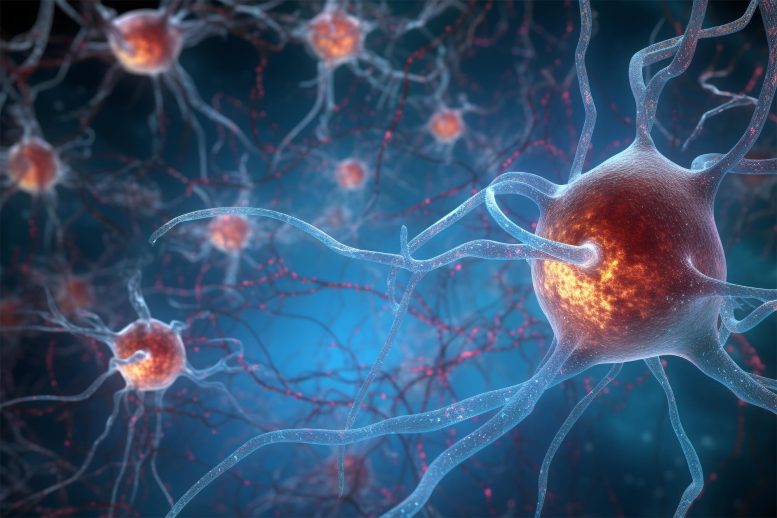
Researchers found that damage to the SORL1 gene in Alzheimer’s Disease (AD) patients results in a decrease of two key proteins critical for healthy neurons. Their findings, using stem-cell-based techniques, suggest potential alternative treatments for AD, especially for patients unresponsive to current therapies.
Genetic detective work by Brigham researchers sheds light on a promising new treatment strategy for Alzheimer’s disease.
Alzheimer’s disease (AD) manifests with a broad spectrum of age onset, symptoms, and severity levels. Lately, the SORL1 gene has garnered interest due to its links with both early and late-stage AD. Yet, the exact impact of damage to SORL1 on the disease remains unclear.
Using stem cells from patients with AD, investigators from Brigham and Women’s Hospital, a founding member of the Mass General Brigham healthcare system, found that loss of normal SORL1 function leads to a reduction in two key proteins known to be involved in AD and which play an essential role in the neurons of healthy individuals. Their results, published in Cell Reports, suggest a potential new strategy for AD treatment, especially for patients not responsive to existing therapies.
“Understanding the subtypes of AD is relatively new in the field of neurology research,” said corresponding author Tracy Young-Pearse, PhD, of the Ann Romney Center for Neurological Diseases. “This is getting at a precision neurology approach, with which we can better predict which patients may be responsive to Alzheimer’s treatment strategies that attack specific genes or target the problems they cause.”
Historically, researchers have studied three potent genetic drivers of AD (APP, PSEN1, and PSEN2), which are commonly mutated in hereditary, early-onset AD (AD diagnosis before age 65). Preclinical models and cell-based systems largely rely on mutations in these genes to model AD, even though in many people with late-onset (“sporadic”) AD, a more complex interaction between genes, lifestyle, and environment determines the presentation of AD. Key neurological features of AD, including the abundance of amyloid-beta plaques in the brain, also vary across individuals.
Brigham researchers played a leadership role in understanding the molecular and genetic basis for AD, including making key discoveries related to the amyloid protein. Two novel anti-amyloid therapies, aducanumab, and lecanemab, have received United States Food and Drug Administration accelerated and traditional approval, respectively, but not all patients respond to these drugs, warranting other treatment options.
In this new study, the researchers utilized a stem-cell-based approach that examined natural genetic variability in AD patients to gain insight into an alternative pathway driving disease. The researchers used CRISPR technologies to remove the SORL1 gene from progenitor stem cells, derived from participants in two Alzheimer’s research cohorts, the Religious Order Studies and Rush Memory and Aging Project. They programmed the stem cells to differentiate into four different kinds of brain cells to examine the impact of removing SORL1 on each cell type. The most dramatic impact was seen in neurons and a “support” cell in the brain (astrocytes), with neurons lacking SORL1 demonstrating especially prominent reduction in the levels of two key AD proteins: APOE and CLU.
Without APOE and CLU, neurons cannot properly regulate lipids, which accumulate in droplets that may impair neurons’ abilities to communicate with each other. The researchers verified their lab-based results by examining natural genetic variation in SORL1 expression in the brain tissue of 50 members of the cohorts, finding again that lower SORL1 activity in neurons was correlated with reduced APOE and CLU in these people.
The researchers are continuing to study other pathways that may lead to AD, such as those involving microglia (brain cells that perform immune functions). By using study models and techniques reflective of AD presentation in the general population, the researchers hope to identify additional biological pathways important in AD.
Mass General Brigham’s founding hospitals have a long tradition of medical breakthroughs, from the first-ever use of ether for surgery at Massachusetts General Hospital to the world’s first successful organ transplant at Brigham and Women’s Hospital. Almost every treatment, test, drug, or medical device in use today was spurred by basic research discoveries and translational research advancements. Young-Pearse and colleagues hope that their work will help extend this tradition of improving patient care through research.
“Our study is one of the first with human cells from a large collection of individuals to try to understand the ‘molecular road’ that starts with SORL1, which we now see converges with APOE,” Young-Pearse said. “Our research points to the importance of developing interventions that target these and other molecular roads to Alzheimer’s disease. The more we can understand subtype-specific differences in AD, the better we will be able to design rational therapeutic interventions to try to fix the problem that is primarily driving disease in each patient.”
Reference: “Cell-type-specific regulation of APOE and CLU levels in human neurons by the Alzheimer’s disease risk gene SORL1” by Hyo Lee, Aimee J. Aylward, Richard V. Pearse, Alexandra M. Lish, Yi-Chen Hsieh, Zachary M. Augur, Courtney R. Benoit, Vicky Chou, Allison Knupp, Cheryl Pan, Srilakshmi Goberdhan, Duc M. Duong, Nicholas T. Seyfried, David A. Bennett, Mariko F. Taga, Kevin Huynh, Matthias Arnold, Peter J. Meikle, Philip L. De Jager, Vilas Menon and Tracy L. Young-Pearse, 22 August 2023, Cell Reports.
DOI: 10.1016/j.celrep.2023.112994
The study was funded by the National Institutes of Health.

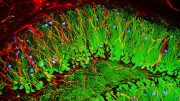

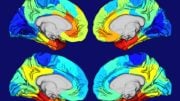
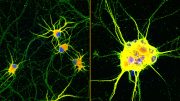
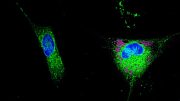
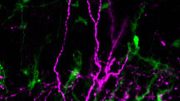
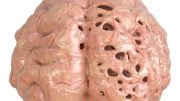

Be the first to comment on "New Research Sheds Light on New “Molecular Road” to Alzheimer’s Disease"